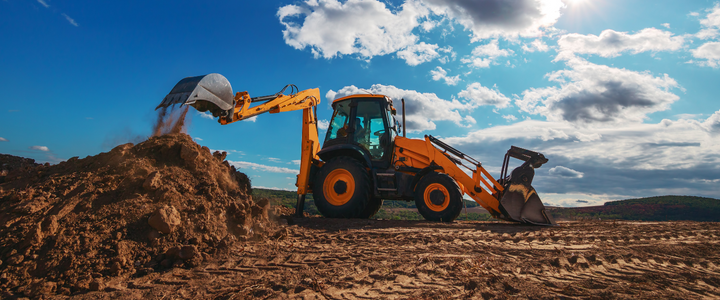Backhoes are standard pieces of equipment on construction sites. The machine is relatively easy to operate, but it also requires training to ensure the safety of everyone at the site. Backhoe safety training is crucial, but do you know where to start?
The Importance of Backhoe Safety in Construction
A backhoe is a relatively straightforward piece of equipment compared to other machinery typically found at construction sites. It only takes one person to control the backhoe, but accidents can still occur without proper training.
For backhoe safety training in Houston, contact Safety by Design today.
Don’t Skip Out On Backhoe Operator Safety Training
Skipping out on backhoe training can leave you open to severe injuries. The backhoe operator needs to know how to ensure the stability of the loader. An unbalanced load can cause the backhoe to tip over.
The backhoe operator also must always be aware of their surroundings. It only takes a second for an accident to occur. It includes watching for anyone near the backhoe; they can create pinch-points resulting in severe or fatal injuries.
Overhead and nearby objects are other potential hazards operators need to stay aware of, along with knowing exactly where and how deep to dig to avoid damaging pipes and electrical wiring.
Backhoe safety training can ensure operators and their fellow construction workers stay safe at the site.
Discover more construction site safety tips.
Top Safety Tips for Backhoe Operation
Backhoe operator safety training should include what to do before, during, and after shutting the equipment down.

Before Operation
Most potential backhoe hazards can be eliminated before operation by following a few safety steps.
Before climbing into the cab, operators need to walk around the backhoe. Look for any obstacles or workers that might be in the way. Then, check the controls within the cab to ensure everything is functioning correctly.
Always buckle up before starting the ignition and check the control panel for flashing warning lights. Keep the alert function turned on when creating the backhoe and use it anytime the machine is being maneuvered into place.
During Operation
Operators have plenty to pay attention to while running a backhoe that goes beyond filling the lifter. To ensure everyone’s safety, always slow down in congested areas. You also want to reduce your speed on rough terrain.
Paying attention to the bucket’s level during driving can help prevent dangerous collisions. Keep the bucket low to keep your line of sight open. Some other backhoe training tips during operation include,
- Only allow one person in the cab at a time
- Reverse up slopes to keep the backhoe’s weight balanced
- Do not try to turn the backhoe around on a hill to avoid potentially tipping over
- Always contact local utilities whenever you are planning on digging a trench
- Keep the load even to avoid over-balancing the backhoe
Some other operating tips are to use stabilizers when working on a hill. You want to keep the equipment balanced at all times during operation. Cave-ins are a possibility when digging, so keep the debris pile around three feet away from the excavation site.
After Operation
After operating a backhoe, operators still have safety guidelines to follow. These backhoe operator training tips include,
- Always park the backhoe on a level surface and set the controls to the neutral position. Don’t forget about the safety brake. It should always be charged when the backhoe isn’t in use
- Lower the bucket to the ground. It helps to provide stability and prevent the backhoe from tipping over
- Some backhoes come with a cooldown feature. It slows the engine down before it’s shut off to protect vital components. Slowing the speed down before reaching the parking spot is another way to help keep the backhoe functioning safely.
- Moving the levers after shutting the engine off releases built-up pressure in the lines. It prevents the attachments from moving and settling, potentially injuring others.
You also want to keep the backhoe locked when not in use. Not only does it prevent theft and vandalism, but it also prevents inexperienced users from operating heavy equipment.
Avoid Backhoe Hazards with Guidance from Safety By Design
Backhoe safety training is crucial for construction sites, and Safety By Design is here to help. If you’re ready to learn more, check out our scissor lift training checklist, manlift safety training, and forklift risk assessment.
Contact us today if you are interested in backhoe operator training or have questions about potential hazards.



